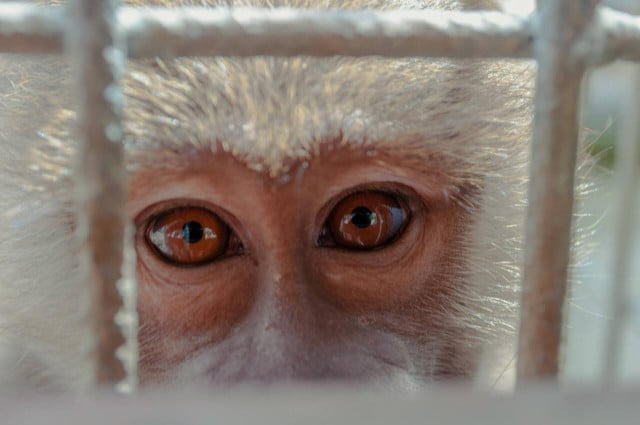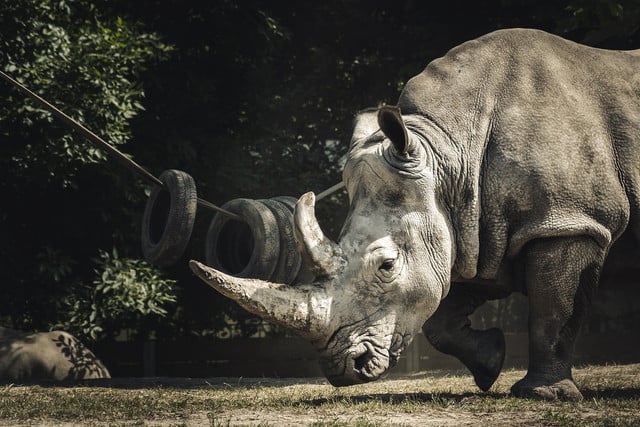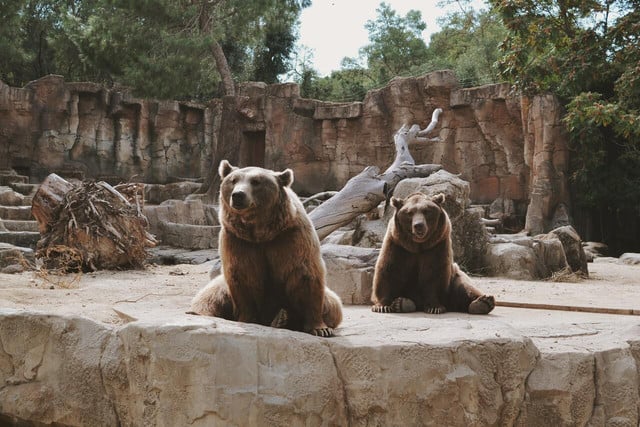Should zoos be banned? Do they serve a positive purpose, or are they unnecessary and cruel? Here are the pros and cons and some helpful history and context.
Up until the early 19th century, the sole function of zoos was to symbolize the power of royalty and indulge their extravagant tastes. People working at zoos paid little attention to the concept of wildlife conservation or expanding our scientific understanding of the animal kingdom. This long history of exploitation is a big reason many activists call for zoos to be banned.
Evidence of the existence of zoos and menageries can be traced back to Ancient Egypt, circa 3500 BC. The Roman Empire was founded in 27 BC, and many Roman emperors kept private zoo collections. Sometimes the captive animals were studied; however, they were mostly used for entertainment in the arena, invariably ending in a cruel death.
The Deal With Modern-Day Zoos

The modern zoo as we know it emerged in the United Kingdom in the 19th century. It was only then that a transition was made from royal menageries, designed to entertain the elite, to public zoological gardens aiming to educate the wider population. Growing urbanization and industrialization led to heightened demand for new forms of entertainment. This rising need and the requirements of scholarly research led to the founding of the first modern zoos.
According to the Association of Zoos and Aquariums, the US had 230 accredited zoos and aquariums as of 2020. At the time, these institutions accommodated nearly 800,000 animals and 6,000 species, with around 1,000 on the endangered species list. Zoos provide 200,000 jobs with an annual budget of $230 million set aside for wildlife conservation. They attract more than 200 million visitors annually, with special educational programs designed specifically for school groups.
Over the past 30 years, many established zoos have endeavored to improve the level of animal care and rehabilitate their image in the public eye. However, despite good intentions and considerable financial effort, the concept of zoos is nonetheless seriously problematic. Activists are calling to ban zoos, and their voices are getting louder.
How can we effectively protect the natural world? Find out more here: Environmental Organizations: 8 NGOs and Non-Profits Worth Supporting
Should Zoos be Banned? Smaller Zoos Often Lack Regulation



The ethical dilemma around keeping wild animals in captivity is significant. The size and complexity of the zoo system and the vast range of animals in their care mean this problem can’t be solved easily. So, some animal activists maintain that a total ban on zoos is the only fix.
The most urgent issue is arguably the lack of uniform regulation. For example, roadside zoos throughout North America make their profit by attracting visitors to adjacent facilities — usually on gas station lots.
Often animals in such zoos are trained to perform tricks. In addition, visitors are allowed to get very close to them, which is not permitted in larger, better-regulated establishments. In fact, the USDA states that allowing visitors to handle animals like baby tigers or lions violates the Animal Welfare Act.
These roadside zoos are consistently reported for neglect and severe animal mistreatment. That is typically a consequence of employing workers with little to no animal welfare or safety training. A complete ban or more vigorous enforcement of standards would also protect these untrained workers from injury or death caused by unpredictable animal behavior.
Moreover, these smaller, unregulated organizations sometimes possess animals procured through illegal trafficking channels, a serious global problem. Banning zoos could go a long way toward halting this practice or — at the very least — reducing its impact on the natural world.
Zoos and Animal Welfare



According to organizations like the World Society for the Protection of Animals and The Humane Society of the United States, restrictive cages and enclosures affect normal animal behavior and sometimes lead to shorter lifespans.
Animals in captivity often develop dangerous and destructive habits due to the stress of living in such restricted spaces. They also lack the everyday social interactions they would experience in the wild. Abnormal animal behavior also puts zoo workers at greater risk for injury and death.
Furthermore, zoos often harbor non-native species unacclimatized to the local environment. That means many animals suffer in extreme weather conditions (polar bears in hot regions, for example) they would otherwise never encounter.
Another unique set of problems arises from the live feeding of certain species, particularly big cats. Live feeding, often touted as positive since it encourages normal predatory behaviors, has a notable downside. Since this method of feeding large predators generally requires smaller animals to be bred and purchased solely for this purpose, it necessitates the exploitation and frequently painful death of the smaller species.
Should Zoos be Banned? The Pros & Cons



Pros:
When ecological conservation emerged as a matter of public interest in the 1970s, zoos began to engage in conservation programs. The American Zoo Association even stated that conservation was its number one priority. To push conservation issues, many large zoos stopped having animals perform tricks for visitors. They even expanded and redesigned animal enclosures to improve the lives of captive animals.
Given that the destruction of wildlife habitats worldwide continues unabated and species like elephants, big cats, birds, primates, rhinos, reptiles, and many others are at real of extinction, zoos have stepped in with the hopes of stopping or at least slowing the decline of these endangered species.
In the face of sharp criticism and loud calls for zoos to be banned, many modern zoos state that their primary function is to breed endangered species and reintroduce them into the wild. They also aim to teach visitors the importance of animal conservation and mindfulness of the ecosystem as a whole.
Tip: You probably came to this article with an open mind and ready to learn more about the usefulness and morality of zoos. This suggests a certain level of intellectual humility — which is an important skill to foster, not just for academic learning but also to bridge differences with others. Learn more about it: Unlock Intellectual Humility: Uncovering Its Benefits, Obstacles, and Development
Cons:
Critics and animal rights activists insist that despite their noble intentions, zoos are inherently immoral and primarily serve to entertain humans at the animals’ expense. Zoo advocates maintain that their efforts make a difference in wildlife conservation and will continue to have a positive environmental impact well into the future.
Putting aside these opposing views, it remains a sad reality that the welfare of zoo animals varies widely depending on where you are. Some establishments have worked hard to adapt their enclosures to better suit the needs of the animals they hold. However, constraints like limited space and funds hinder this process. Smaller zoos don’t always have the money to hire well-trained zoological staff or expand their breeding programs and facilities to maintain the ethos of conservation. Banning smaller, less established zoos with little funding could be a practical first step to reducing harm to wildlife.
For some cute marsupial, bear or cat-like faces that you might not get to see in a zoo, check out the 15 cutest exotic animals in the world!
There is no quick fix for the issues faced by zoos across the country and around the world. That said, a more uniform, robust, and compassionate regulatory system based on the humane care and conservation of wildlife would be a step in the right direction. Then, targeted bans for specific zoos that do not satisfy firmer regulations might become an option.
Learn more about endangered species on Earth:
- Uncomfortable Truths: How Many Polar Bears Are Left?
- Are Praying Mantises Endangered? No—But People Think They Are
- Why Are Tigers Endangered? The 4 Major Threats
- Are Honeybees Endangered? How to Help the Honeybee
- Why the Mexican Gray Wolf is Endangered and How You Can Help
- Why Are Red Pandas Endangered & How Can We Help?
- Are Narwhals Extinct or Endangered? How Can You Help?
- Are Bears Endangered? These 3 Species Are
- Are Sea Lions Endangered? Threats & What You Can Do
- Endangered Trees: 10 At-Risk Species
- The 15 Most Endangered Animals in America
Read more:
- Animal Testing: How Big Is the Problem?
- 6 Solutions to Deforestation – and What You Can Do
- Factory Farming: A Look at This Problematic System
Do you like this post?









